The strange life of Loyal Liverpool
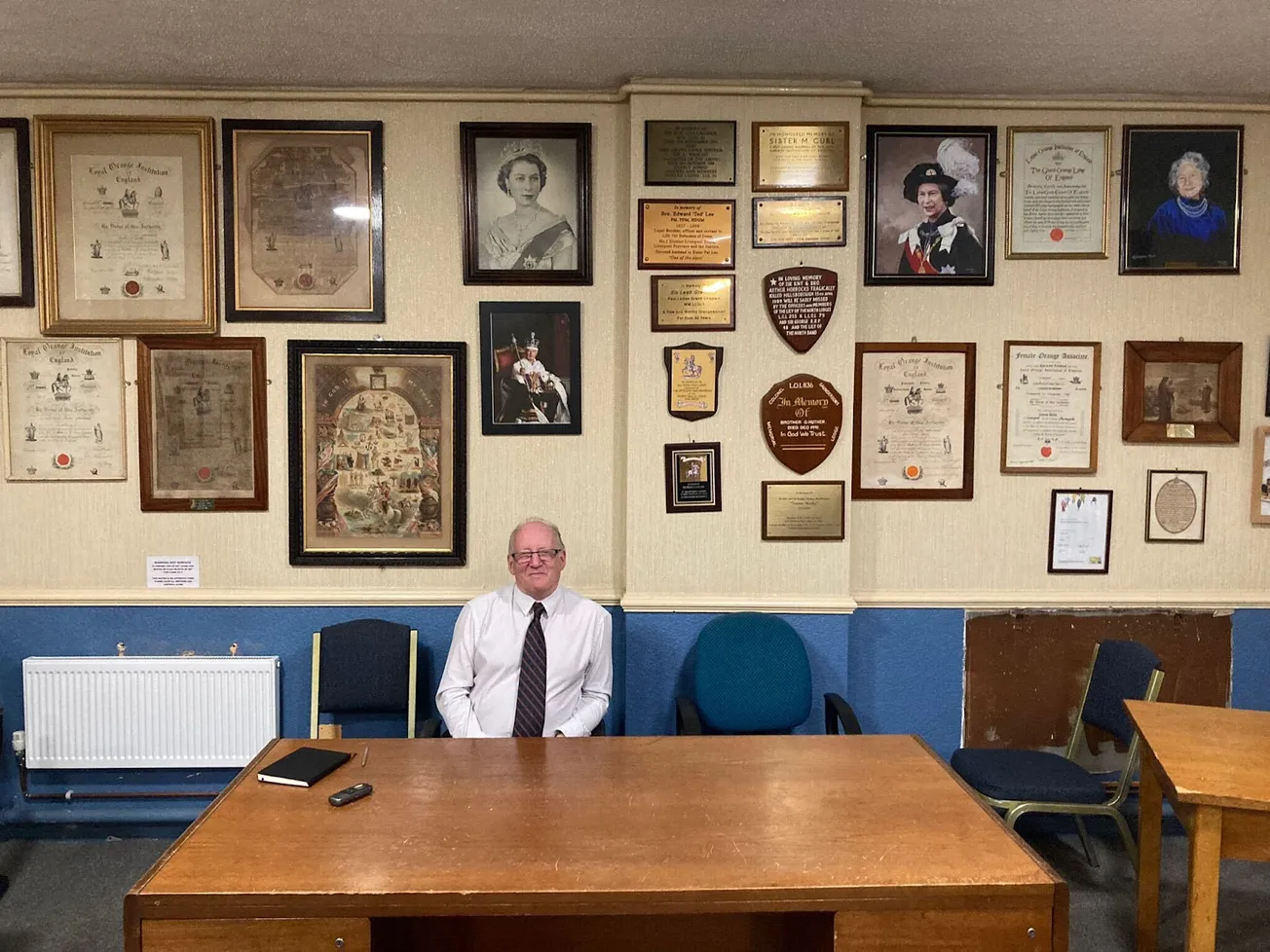
Yesterday’s 12th July parades are the biggest in the calendar of the Orange Order. But why is Liverpool still a stronghold for these old-fashioned rituals?
At the top of Everton brow, the highest point in the city of Liverpool, stands the type of pub that doesn’t attract many strangers or off-chance walk-ins. The fence is painted red, white and blue, and there are slightly threadbare Union Jacks alongside the old Northern Irish flag, complete with the red hand of Ulster and a star and crown, emblazoned in the middle of St George’s Cross.
Grand Master Brother Steve Kingston waves me in from the rain and ushers me through to a side room so as not to disturb the regulars. “Bingo,” he tells me, nodding towards a group of punters. “It’s for the pensioners.”
I am in Liverpool’s Provincial Grand Orange Lodge, the headquarters of the city’s section of the Loyal Orange Institution, or the Orange Order. The more than two-century-old fraternal organisation was established in 1795, at the height of sectarian violence and religious strife in County Armagh. Its aim? To maintain Protestant ascendancy in the then-British-ruled island of Ireland.
“People join because they support the principles,” Steve says. At 65, he’s been in the Order for over half a century. It’s all in the cause of “the Protestant religion. Support for the monarchy. Constitutional government… that hasn’t changed.”
The principles of the Orange Lodge may not have changed, but quite a lot has changed around it. Mervyn Busteed is an academic historian and an expert on the history of the Orange Order in Merseyside. “You almost have the impression that the onward stream of historical development has left the order somewhat isolated,” he tells me over the phone. “They are something perhaps of a historical relic, from the past.”
They may be a historical relic in Liverpool, but for many, they remain a deeply sectarian, Protestant-supremacist organisation. Some refer to their parades as “hate marches”, and there is a long history of anti-Catholic bigotry in the wider Orange Order. In 2017, the Lodge had to condemn the violence that broke out as a Protestant parade by the Apprentice Boys of Derry went past the Liffey pub on Renshaw Street in the city centre. In 2019 in Glasgow (the other centre of orange activity on the British mainland), a Catholic priest was spat at during an orange walk.
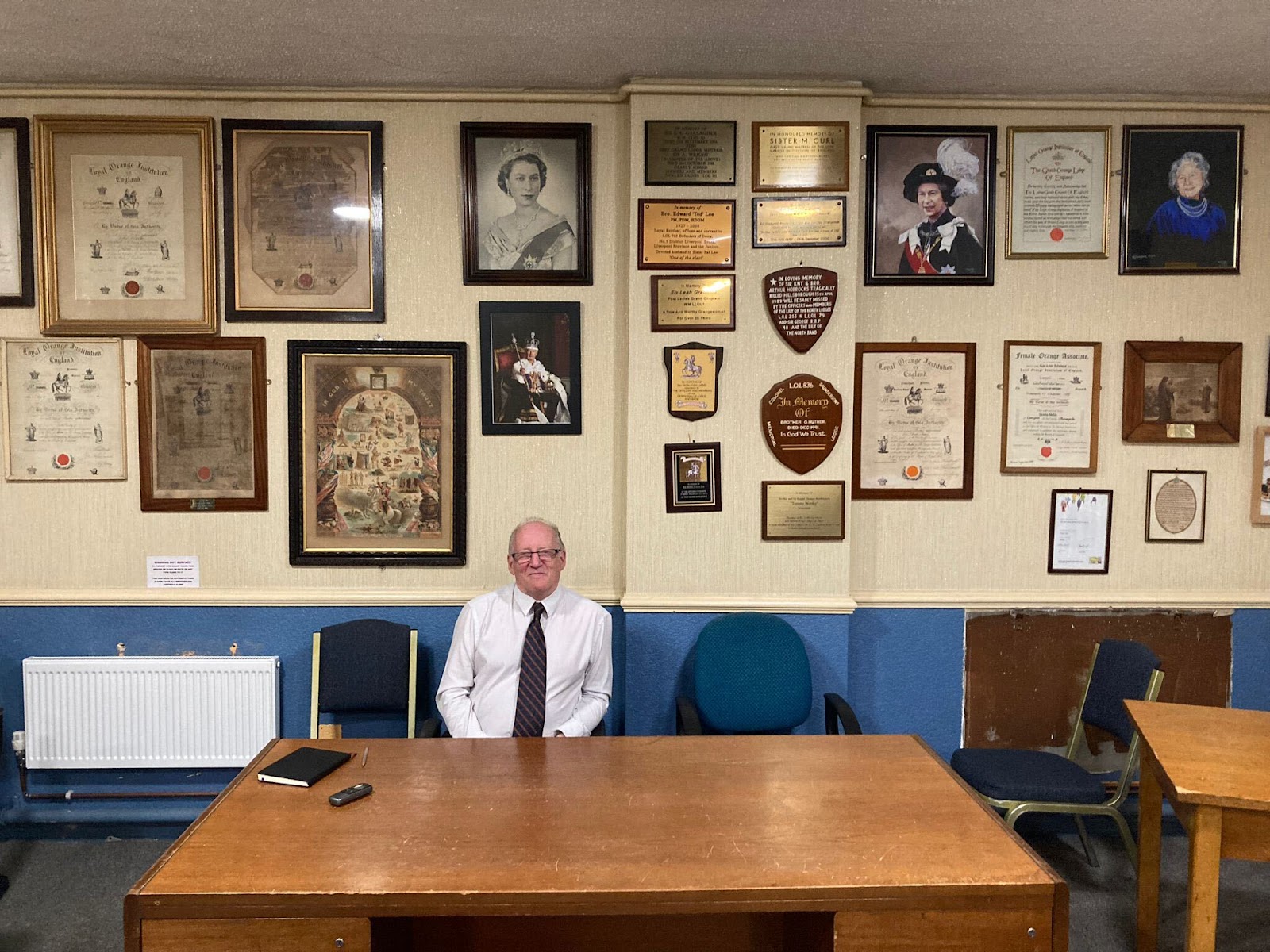
Despite this, orange marches through Liverpool this week were more likely to generate bemusement, eye rolls, tuts, or even simple shrugs or curiosity, rather than violence. They passed by without incident. Steve Kingston denies any anti-Catholic feeling and says the Lodge exists because members believe in "religious freedom" for "everyone", and he mentions that he has worked with and been on friendly terms with Roman Catholics before. But that is slightly soured when he admits that Lodge members cannot marry Catholics (Busteed, the historian, tells me he is aware of incidents in which members have been expelled for doing so).
So why is such historical anachronism, with such a chequered past, still maintaining a presence on Merseyside?
“The Lodges spread to Liverpool in the early 19th century,” Steve, the Grand Master, says. As a senior member, he’s keen to emphasise the positives: charitable donations, socials, family orientation, and a recent exhibition on the Liverpool Order for the Museum of Liverpool. “The first Liverpool parade was in 1819… My mother was a member, and uncles and aunties”, he says. “My children and grandchildren are members.”
We’re speaking before the biggest day in the Orange calendar: 12th July. It’s Glastonbury for fans of William III. The Dutch King — also known as William of Orange, or King Billy to his mates — was invited to the English throne by protestant nobles in the 17th century in what’s known as the Glorious Revolution. William III went on to defeat the Catholic James II in the Battle of the Boyne, an event commemorated every year with gigantic bonfires over loyalist areas of East Belfast.
In Liverpool each year, we see processions replete with flute bands, drummers, banners and uniforms. Steve Kingston and his fellow Orangemen will be raising a glass to King Billy and the British crown in the only remaining 12th July procession on the British mainland. Marches will begin at the Orange Lodge on Mill Street in the Dingle, as well as from the Lodge on Everton Park. They’ll converge in the city centre and finish up by heading to Southport on coaches for more festivities.
When Ireland was partitioned in 1921 after a war of independence, six counties in the North were carved out of historical Ulster to create a Protestant-majority statelet where Orangeism was a highly influential political and religious tendency. Northern Ireland’s first prime minister Jim Craig was an Orange Order member: “Ours is a Protestant government,” he declared, “and I am an Orangeman.” Naturally, for the region’s Catholic minority, who preferred reunification with the Republic of Ireland, this was a problem.
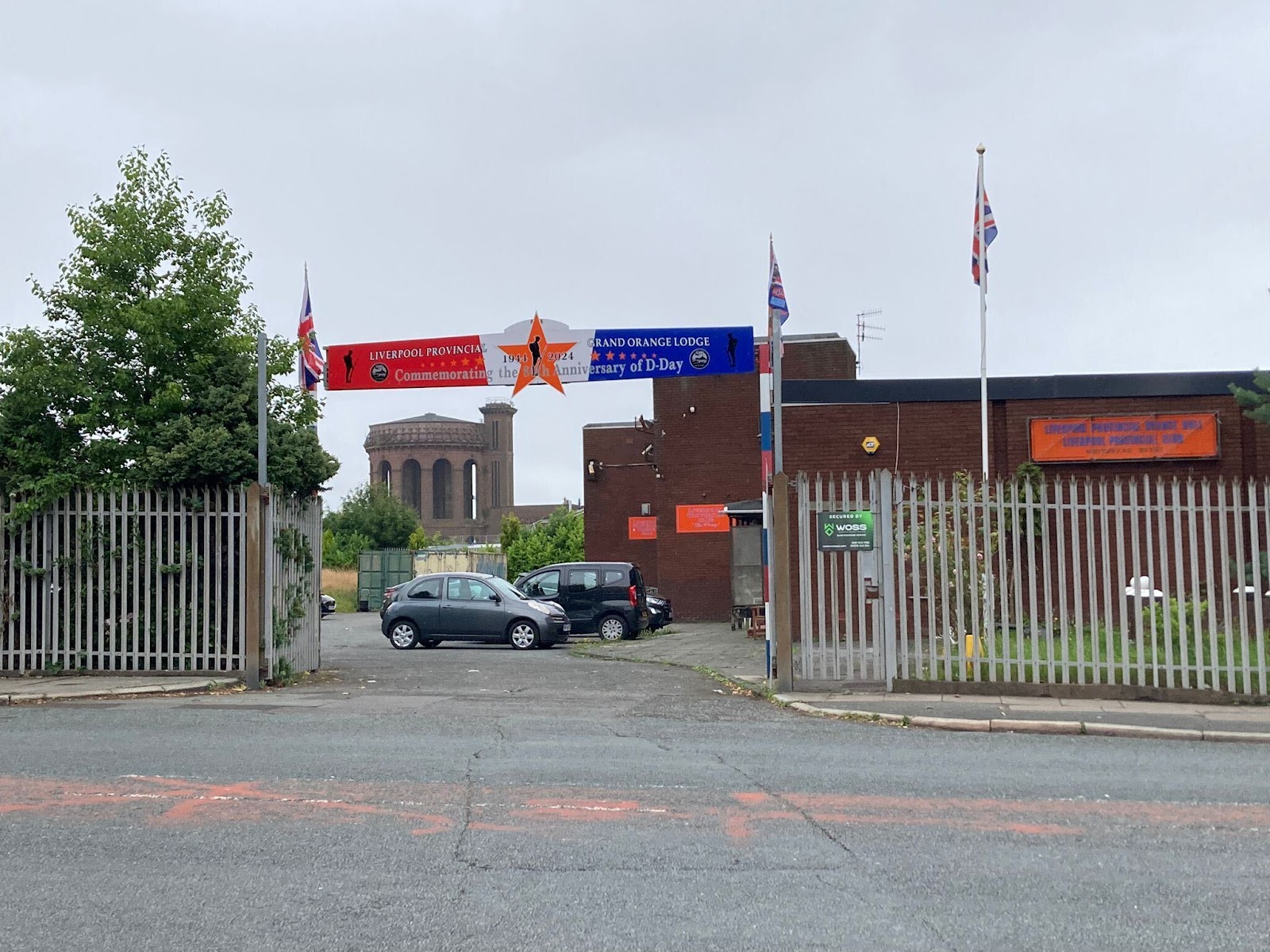
During the Troubles, from the late 1960s until the Good Friday Agreement of 1998, Republican groups, primarily the IRA, fought a violent guerrilla war against the police, the British army, and loyalist paramilitaries over the constitutional status of the North, motivated also by the exclusion of Catholics from political life and widespread discrimination in employment and housing. Arguments about where the Orange Order could have its regular processions frequently led to inter-communal rioting. Ian Paisley was a former member, and he fought bitterly for the right of Orange Lodge members to parade through Catholic areas against local feeling.
It’s a strange and circuitous route, from this troubled history of a political-religious sect to a drizzly afternoon of bingo for the pensioners in a well-stocked bar in an almost windowless, flat-roof pub in the north end of Liverpool. Inside there’s more patriotic fare: royalty on the walls, more flags; think Peter Kay’s Phoenix Club decked out for a Royal Wedding, with the British patriotism vibes turned up to 11. But there’s some even more unusual iconography, too. Photos of serious men in suits with orange sashes, the symbol of the Order. An oil painting of an old-fashioned military-style band parading through a working-class estate.
The Irish connection is one of the many things that makes Liverpool a bit odd. It has given the place a unique, slightly wayward culture compared to other English cities. The presence of Orange Lodges marching through a large, cosmopolitan, urban area is a strange sight to see, the sort of thing many associate with grainy news items on television during the Troubles.
“It all grew to a particular strength in Liverpool for two reasons,” Busteed tells me. “One was the Protestant reaction to the influx of Irish Catholics in the first half of the 19th century. And the second was leadership. There was a succession of very strong leaders in the Protestant Orange tradition in Liverpool.”
In the 1800s, Protestant orators were both feared and revered for their stirring “anti-Papist” sermons, such as Hugh McNeile in his church in Prince’s Park (sample content: people who carry out confessions should be sentenced to death, because “Death alone would prevent the evil”). Victorian congregations in Merseyside would be whipped into a frenzy by evangelicals like McNeile. “He was an extraordinarily effective public speaker and organiser,” says Busteed. “A very strongly anti-Catholic. As far as he was concerned, Roman Catholicism was a conspiracy to overthrow the constitution of Protestant Britain.”
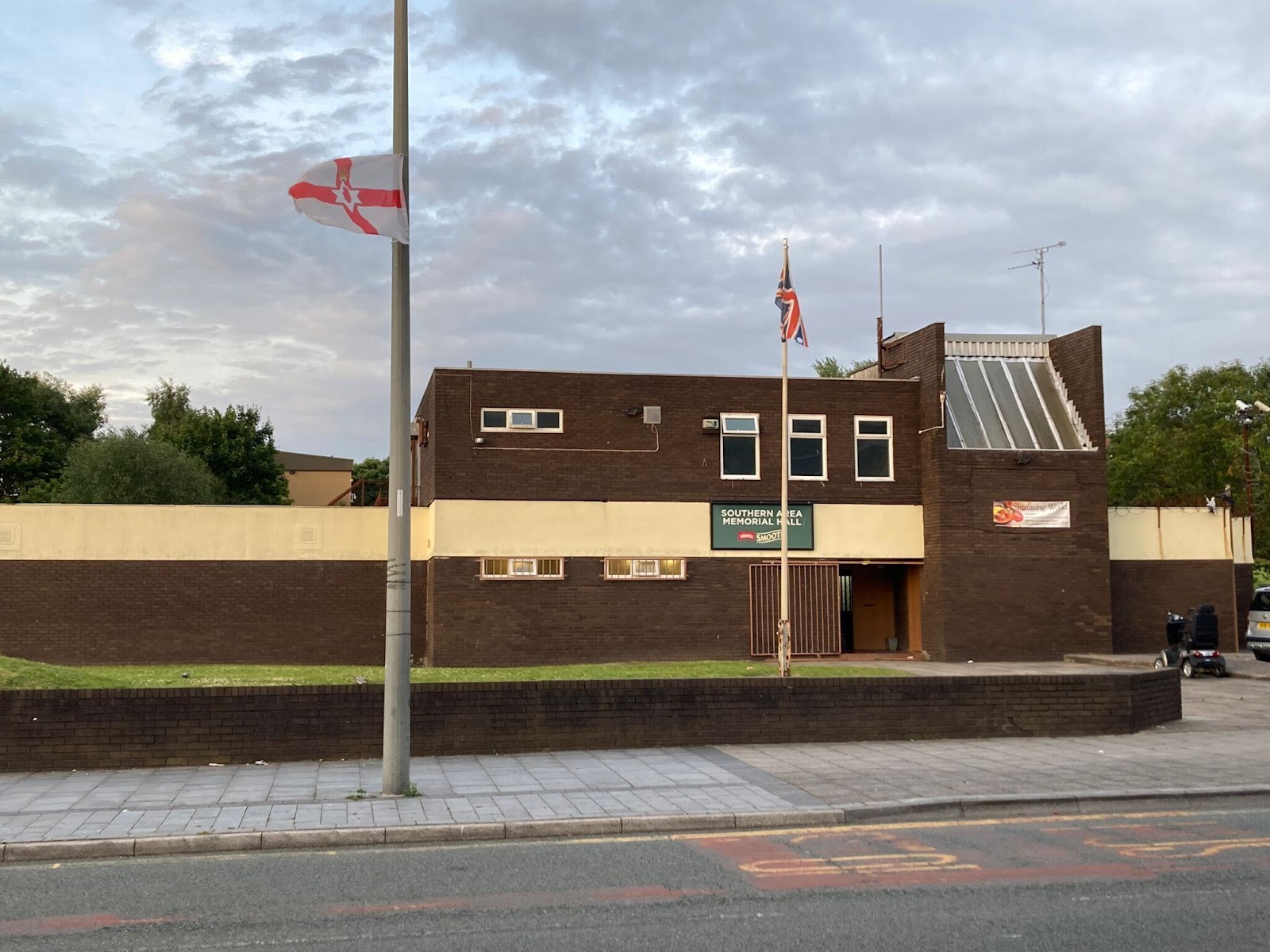
It’s hard to imagine a topic less motivating for most Liverpudlians today as disagreements about the Eucharist, the sign of the cross, the religious liturgy, or even the constitution of “Protestant Britain”. But this was central to many people’s identities at the time. McNeile played a huge part in the city’s politics; they’ve even got a statue of him inside St George’s Hall.
Perhaps just as important was the fact that a quick influx of destitute Irish migrants from the Great Famine meant competition over jobs and housing. This isn’t an assessment that Grand Master Steve Kingston denies. “Even today,” he tells me, “if you get an influx of another culture, sometimes people feel slightly uneasy, shall we say? So that sometimes spurned people on to join the Orange Lodges.”
Some say the strength of Orangeism was what made Liverpool a “Tory Town” for decades later than comparative cities like Manchester, Leeds or Sheffield. Labour was squeezed between a strong working-class Protestant vote that sided with a local Conservative Party, and a working-class Catholic population that voted for Irish Nationalist candidates. Liverpool Scotland is the only constituency to have ever elected an Irish National Party MP on the British mainland: TP O’Connor, who sat in parliament until 1928. We even had a small Protestant Party on the council until 1973, which cooperated with the local Tories to not stand candidates against each other. All this can be difficult to believe in 2024, now that the city is now so heavily associated not just with Labour, but with a kind of rebellious, outsider, “Scouse not English”, anti-monarchy self-image — perhaps typified best by the sight of Liverpool fans’ ritual booing of the national anthem in Wembley whenever their team plays in a cup final.
“We are probably in a city in which a lot of the residents have completely opposing views to us,” Kingston wearily admits. “For instance, I went to the cup final at Wembley. It might sound stupid, but I was absolutely ashamed when the anthem came on because it was me and my son-in-law standing singing and about 25,000 booing.”
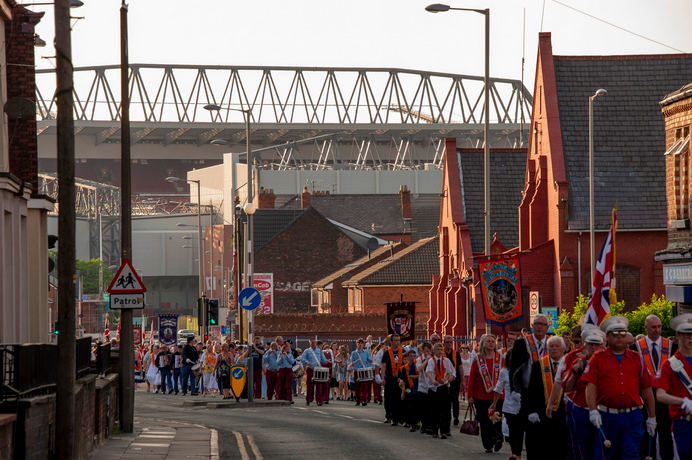
But these kinds of displays of Scouse-populist political cultures are nothing when compared with the regular violence that sectarianism used to engender. In 1909, sectarian rioting and violence between Protestant and Catholic communities saw disturbances across Liverpool; a witness in a government inquiry claimed that 3,200 Catholics were forced to flee their homes in Everton for safety. Many Protestants were also forced to leave Catholic areas near the docks.
Such violent tensions today have largely dissipated, and rivalry between the different Christian denominations rarely registers in Liverpool today. “It’s a bit different now, thankfully,” Grand Master Steve says. But that begs the question: if religious ideologies are no longer in contention, why continue with the customs and rituals that accentuated them? Why march on the Twelfth, in militaristic processions that many find disturbing and exclusionary? Surely it’s time to hang up the sash? After all, numbers have declined massively, and the kind of religiosity that was once commonplace has dwindled. Not every member of the Lodge will even go to church every Sunday nowadays.
“The Orange Order is really fuelled by history, tradition, family history, and family loyalties,” Busteed says, “and very strong social bonding between Lodge members. They socialise a lot with each other. Outings, drinking, dining. That tradition has been going on for hundreds of years.”
Today, red vs. blue is more of a visible division than orange vs. green, and the politics of Liverpool is now firmly rooted in class and policy debates rather than religion. This week, the old traditions have been on display in the Dingle and Everton for the famous or infamous Twelfth (depending on your persuasion). The Orange Lodge may enjoy the parades, but they do not march along with time.

Comments
Latest
Losing local radio — and my mum
A place in the sun: How do a bankrupt charity boss and his councillor partner afford a “luxury” flat abroad?
Gritty, cheeky, sincere: How Martin Parr captured the spirit of Merseyside
Liverpool’s hospitality scene is changing. So why are we reluctant to shout about it?
The strange life of Loyal Liverpool
Yesterday’s 12th July parades are the biggest in the calendar of the Orange Order. But why is Liverpool still a stronghold for these old-fashioned rituals?